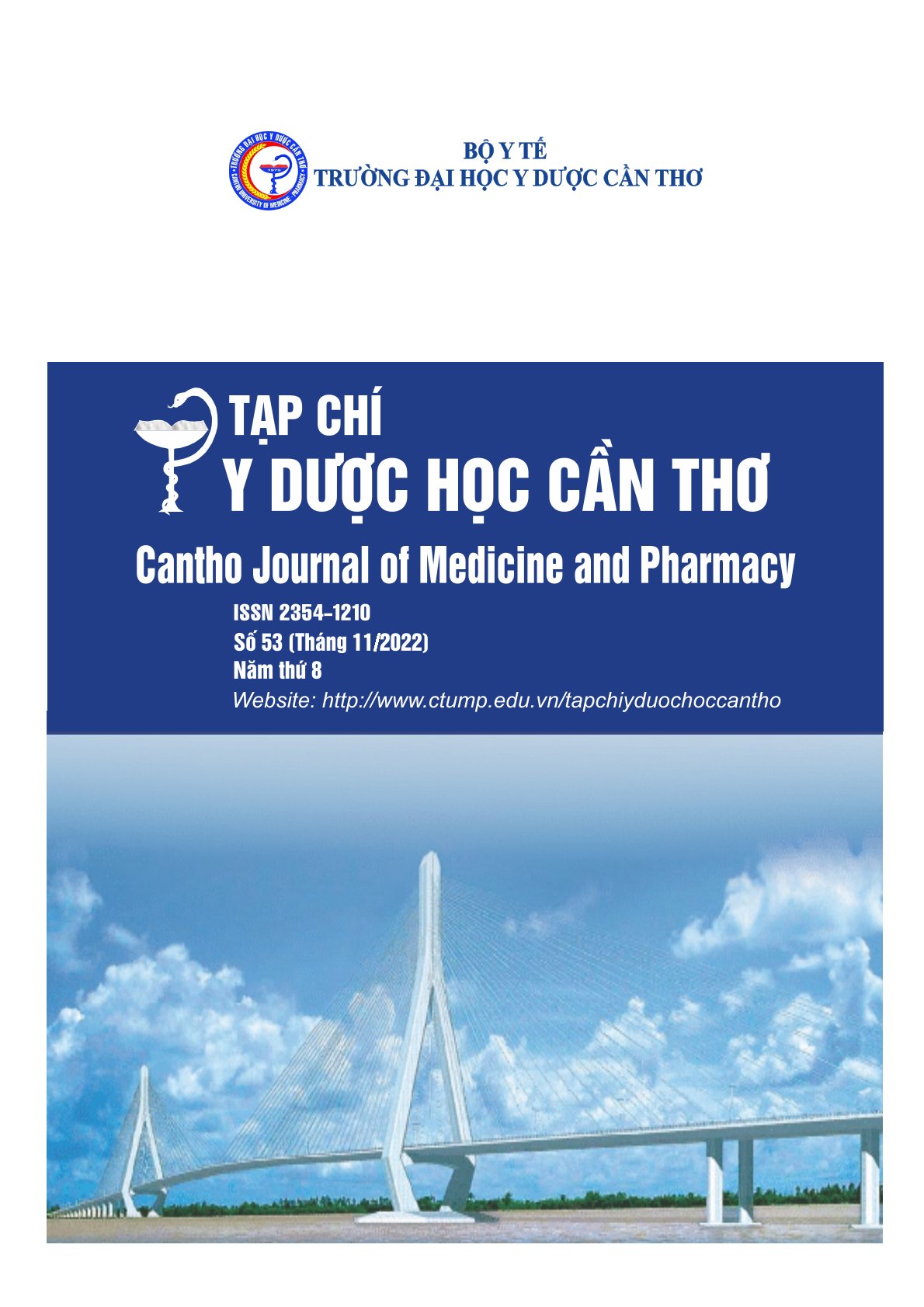PRECIPITATING FACTORS AND CLINICAL CHARACTERISTICS OF CHILDREN WITH DIABETIC KETOACIDOSIS AT CAN THO CHILDREN’S HOSPITAL
Main Article Content
Abstract
Background: Diabetic ketoacidosis is an acute, serious, life-threatening complication caused by insulin deficiency. Objectives: To investigate the precipitating factors and clinical characteristics of children with diabetic ketoacidosis at Can Tho Children's Hospital. Materials and methods: A retrospective case series was conducted on 30 children diagnosed with diabetic ketoacidosis at Can Tho Children's Hospital from 2017-2021. Results: 66.7% of patients were from 11-16 years old. Female/male: 2.3/1. 33.3% of patients had a past medical history of diabetes. 56.7% of patients had an infection as a precipitating factor. Symptoms include unconsciousness (60%), fatigue (43.3%), gastrointestinal symptoms (nausea, vomiting, abdominal pain: 43,3%). Common signs are unconsciousness (56.7%), tachypnea (50%), Kussmaul breathing (43.3%), dehydration (43.3%). Conclusions: The majority of patients with diabetic ketoacidosis aged 11-16 years, were female, had no past medical history of diabetes, had an infection as a precipitating factor, had signs and symptoms including unconsciousness, tachypnea, Kussmaul breathing, dehydration, fatigue and gastrointestinal symptoms.
Article Details
Keywords
diabetes mellitus, diabetic ketoacidosis, children, precipitating factors
References
2. Nguyễn Thụy Minh Thư, Nguyễn Đình Vũ (2007), Mô tả đặc điểm dịch tễ học, lâm sàng, cận lâm sàng và điều trị của bệnh nhân nhiễm toan ceton do tiểu đường tại bệnh viện Nhi Đồng 1 và Nhi Đồng 2 từ 1/1/2001 đến 31/12/2006, Luận văn tốt nghiệp Bác sĩ đa khoa, Đại học Y Dược Tp. HCM.
3. Dương Tường Vy (2016), Đặc điểm nhiễm toan ceton do đái tháo đường týp 1 ở trẻ em bệnh viện Nhi Đồng 2 từ 01/06/2008 – 30/06/2016, Luận văn Bác sĩ nội trú, Trường Đại học Y khoa Phạm Ngọc Thạch.
4. Chowdhury S. (2015), “Puberty and type 1 diabetes”, Indian J Endocrinol Metab, 19(Suppl 1), pp. 51-54.
5. Hadgu F.B., Sibhat G.G., and Gebretsadik L.G. (2019), “Diabetic ketoacidosis in children and adolescents with newly diagnosed type 1 diabetes in Tigray, Ethiopia: retrospective observational study”, Pediatric Health Med Ther, 10, pp. 49-55.
6. Onyiriuka A.N. and Ifebi E. (2013), “Ketoacidosis at diagnosis of type 1 diabetes in children and adolescents: frequency and clinical characteristics”, J Diabetes Metab Disord, 12(1), pp. 47.
7. Rewers A., Chase H.P., Mackenzie T., et al. (2002), “Predictors of acute complications in children with type 1 diabetes”, JAMA, 287(19), pp. 2511-2518.
8. Satti S.A., Saadeldin I.Y., and Dammas A.S. (2013), “Diabetic Ketoacidosis in children admitted to Pediatric Intensive Care Unit of King Fahad Hospital, Al-Baha, Saudi Arabia: Precipitating factors, epidemiological parameters and clinical presentation”, Sudan J Paediatr, 13(2), pp. 24-30.
9. Wolfsdorf J.I., Glaser N., Agus M., et al. (2018), “ISPAD Clinical Practice Consensus Guidelines 2018: Diabetic ketoacidosis and the hyperglycemic hyperosmolar state”, Pediatr Diabetes, 19, pp. 155-177.


